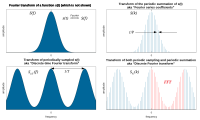
An enhanced inverse finite element method for displacement and stress monitoring of multilayered composite and sandwich structures
Sign Up to like & getrecommendations! Published in 2017 at "Composite Structures"
DOI: 10.1016/j.compstruct.2017.07.078
Abstract: Abstract The inverse finite element method (iFEM) is an innovative framework for dynamic tracking of full-field structural displacements and stresses in structures that are instrumented with a network of strain sensors. In this study, an… read more here.
Keywords: finite element; methodology; element method; inverse finite ... See more keywords

Inverse finite element analysis using a simple reduced integration hexahedral solid-shell element
Sign Up to like & getrecommendations! Published in 2020 at "Finite Elements in Analysis and Design"
DOI: 10.1016/j.finel.2020.103440
Abstract: Abstract This paper introduces the inverse finite element method using simple brick elements that can be used for shell analysis. The proposed element is the inverse counterpart of an existing Lagrangean-based “direct” trilinear hexahedral finite… read more here.
Keywords: inverse finite; finite element; element; reduced integration ... See more keywords

Shape Sensing of Plate and Shell Structures Undergoing Large Displacements Using the Inverse Finite Element Method
Sign Up to like & getrecommendations! Published in 2018 at "Shock and Vibration"
DOI: 10.1155/2018/8076085
Abstract: The inverse Finite Element Method (iFEM) is applied to reconstruct the displacement field of a shell structure which undergoes large deformations using discreet strain measurements as the prescribed data. The iFEM computations are carried out… read more here.
Keywords: element method; finite element; inverse finite; large displacements ... See more keywords

Developing a Lung Model in the Age of COVID-19: A Digital Image Correlation and Inverse Finite Element Analysis Framework
Sign Up to like & getrecommendations! Published in 2021 at "Frontiers in Bioengineering and Biotechnology"
DOI: 10.3389/fbioe.2021.684778
Abstract: Pulmonary diseases, driven by pollution, industrial farming, vaping, and the infamous COVID-19 pandemic, lead morbidity and mortality rates worldwide. Computational biomechanical models can enhance predictive capabilities to understand fundamental lung physiology; however, such investigations are… read more here.
Keywords: finite element; framework; inverse finite; element analysis ... See more keywords